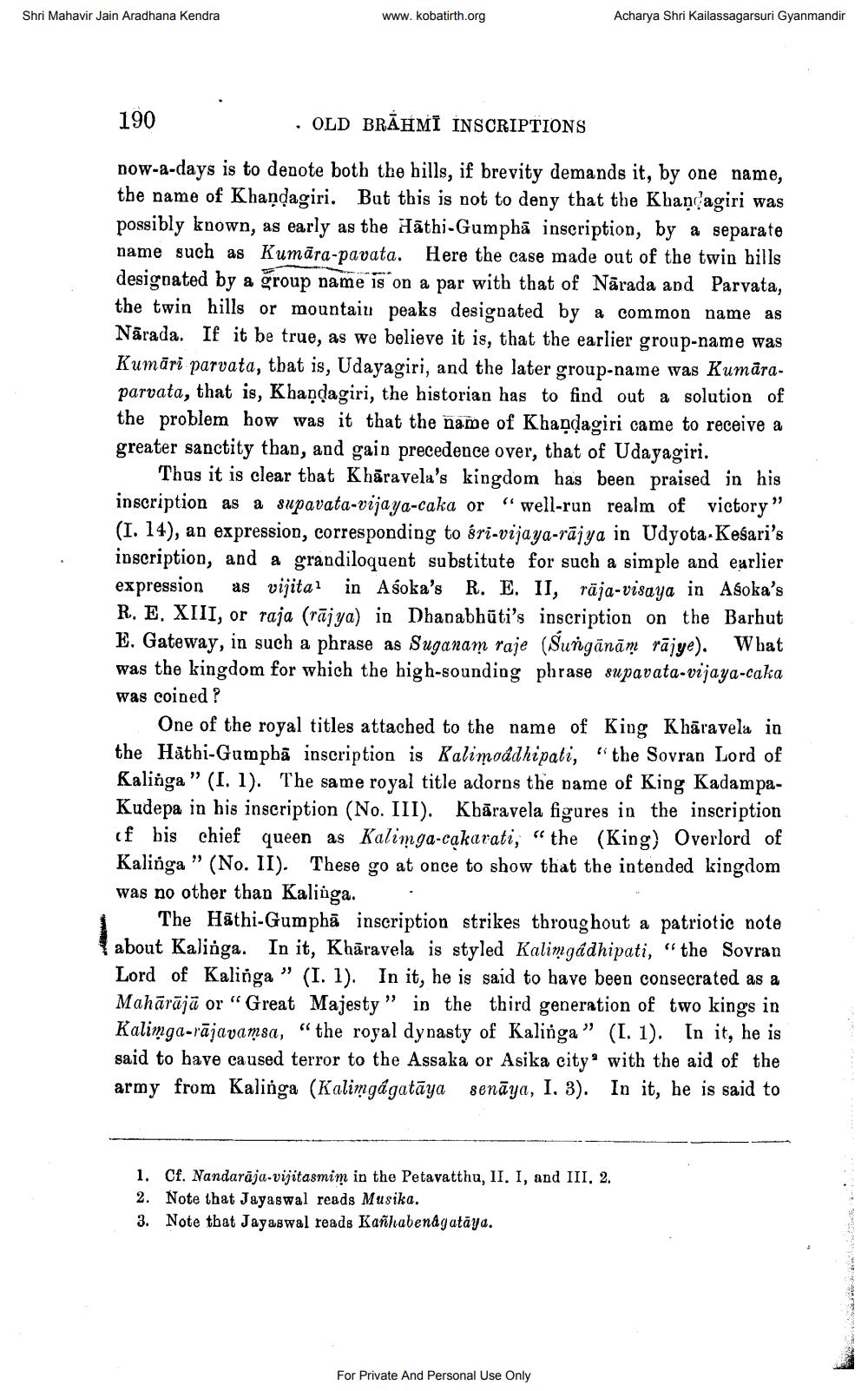________________
Shri Mahavir Jain Aradhana Kendra
www. kobatirth.org
Acharya Shri Kailassagarsuri Gyanmandir
190
· OLD BRĀHMI INSCRIPTIONS now-a-days is to denote both the hills, if brevity demands it, by one name, the name of Khandagiri. But this is not to deny that the Khantagiri was possibly known, as early as the Hathi-Gumphā inscription, by a separate name such as Kumāra-pavata. Here the case made out of the twin hills designated by a group name is on a par with that of Nārada and Parvata, the twin hills or mountain peaks designated by a common name as Närada. If it be true, as we believe it is, that the earlier group-name was Kumāri parvata, that is, Udayagiri, and the later group-name was Kumāraparvata, that is, Khandagiri, the historian has to find out a solution of the problem how was it that the name of Khaņdagiri came to receive a greater sanctity than, and gain precedence over, that of Udayagiri.
Thus it is clear that Khāravela's kingdom has been praised in his inscription as a supavata-vijaya-caka or “well-run realm of victory” (I. 14), an expression, corresponding to sri-vijaya-rājya in Udyota-Keśari's inscription, and a grandiloquent substitute for such a simple and earlier expression as vijital in Asoka's R. E. II, rāja-visaya in Asoka's R. E. XIII, or raja (rājya) in Dhanabhūti's inscription on the Barhut E. Gateway, in such a phrase as Suganam raje (Sungānām rājye). What was the kingdom for which the high-sounding phrase supavata-vijaya-caka was coined ?
One of the royal titles attached to the name of King Khāravela in the Hathi-Gumpbā inscription is Kalimoddhipati, “the Sovran Lord of Kalinga" (I. 1). The same royal title adorns the name of King KadampaKudepa in his inscription (No. III). Kbāravela figures in the inscription if bis chief queen as Kalimga-cąkarati, “the (King) Overlord of Kalinga” (No. II). These go at once to show that the intended kingdom was no other than Kalinga. .
The Hāthi-Gumphā inscription strikes throughout a patriotic note about Kalinga. In it, Khāravela is styled Kalimgadhipati, “the Sovran Lord of Kalinga” (I. 1). In it, he is said to have been consecrated as a Mahārājā or “Great Majesty" in the third generation of two kings in Kalimga-rājavamsa, “the royal dynasty of Kalinga” (I. 1). In it, he is said to have caused terror to the Assaka or Asika city with the aid of the army from Kalinga (Kalimgá gatāya senāya, I. 3). In it, he is said to
1. Cf. Nandarāja-vijitasmim in the Petavatthu, II. I, and III, 2. 2. Note that Jayaswal reads Musika. 3. Note that Jayaswal reads Kanihabenågatāya.
For Private And Personal Use Only




